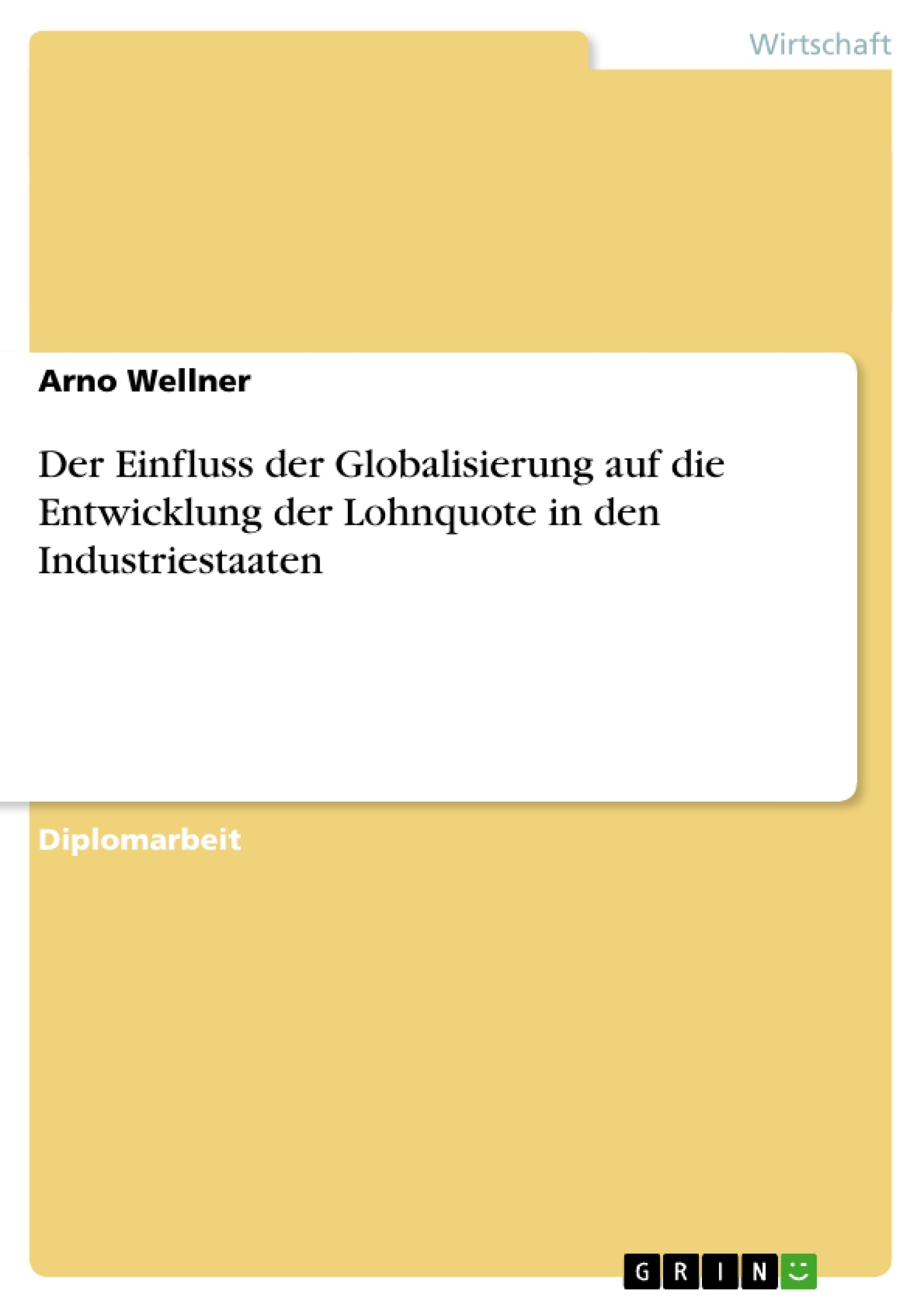In vielen Industriestaaten ist der Anteil des Lohneinkommens am Gesamteinkommen in den vergangenen 30 Jahren kontinuierlich gesunken. Am ausgeprägtesten war dieser Trend in Kontinentaleuropa und in Japan, weniger in den angelsächsischen Ländern. Dies ist eines der Ergebnisse des „OECD Employment Outlook“ von 2007 und des „World Economic Outlook“ des Internationalen Währungsfonds von 2007. Der Anteil des Lohneinkommens am Gesamteinkommen wird als Lohnquote bezeichnet und lässt sich als Verteilungsmaß zwischen den Produktionsfaktoren Kapital und Arbeit interpretieren. Für Änderungen der Lohnquote gibt es eine Vielzahl an Erklärungen. Vorliegende Arbeit ist der Versuch, den Einfluss der Globalisierung auf die Entwicklung des langfristigen Gleichgewichtswertes der Lohnquote zu untersuchen. Das Gewicht liegt dabei auf der Darstellung der theoretischen Zusammenhänge.
Häufig gestellte Fragen
What is the scope of this document?
This document previews a comprehensive study analyzing the impact of globalization on the wage share in industrialized nations. It includes the title, table of contents, objectives, key themes, chapter summaries, and keywords to provide a structured overview.
What are the main sections covered in the table of contents?
The table of contents includes the following sections: Introduction, Fundamentals and Concepts, Change in the Wage Share in the Heckscher-Ohlin Model (including empirical evidence, extensions, and capital mobility), Change in the Wage Share in the One-Good Model (including determinants, capital market integration, goods market integration, migration, and substitution elasticity), A Synthesis, Conclusion, Appendices, and Bibliography. It also lists figures used in the study.
What are some of the key themes explored in the Heckscher-Ohlin Model section?
Key themes explored in the Heckscher-Ohlin model section include the impact of trade liberalization on the wage share, the Rybczynski theorem, the iso-factor price theorem, diversification cones, the consideration of human capital, technology differences, and the implications of capital mobility.
What are some of the determinants of the wage share discussed in the One-Good Model section?
The determinants of the wage share in the One-Good Model include the capital-output ratio, relative bargaining power, and the elasticity of goods demand.
How does capital market integration influence the wage share in the One-Good Model?
Capital market integration's impact on the wage share in the One-Good Model is analyzed under conditions of both perfect and imperfect competition in the labor market. It also includes a sectoral perspective with imperfect competition.
What are the different perspectives on efficient contracts considered?
The document considers the Right-to-manage approach and the case of "efficient contracts" in the context of wage determination and capital market integration.
How is migration analyzed in the one-good model?
Migration and its effect on the wage share are examined within the framework of the one-good model, analyzing its implications for the labor market.
What is the central question the thesis tries to answer?
The central question of the thesis is to determine the degree to which globalization is responsible for the redistribution of wealth from employees to owners of capital in industrialized nations.
What is the definition of globalization that this thesis operates under?
Globalization is defined in this thesis as the increasing integration of various markets (Goods and services, capital, labor) and how this increase in integration has affected the wage share in developed countries.
Are there any assumptions about the markets in the thesis?
All factor prices are assumed to be exogenous, that is, the suppliers and consumers of the factors of production have very little power on the price of each.
- Quote paper
- Arno Wellner (Author), 2008, Der Einfluss der Globalisierung auf die Entwicklung der Lohnquote in den Industriestaaten, Munich, GRIN Verlag, https://www.grin.com/document/126377




